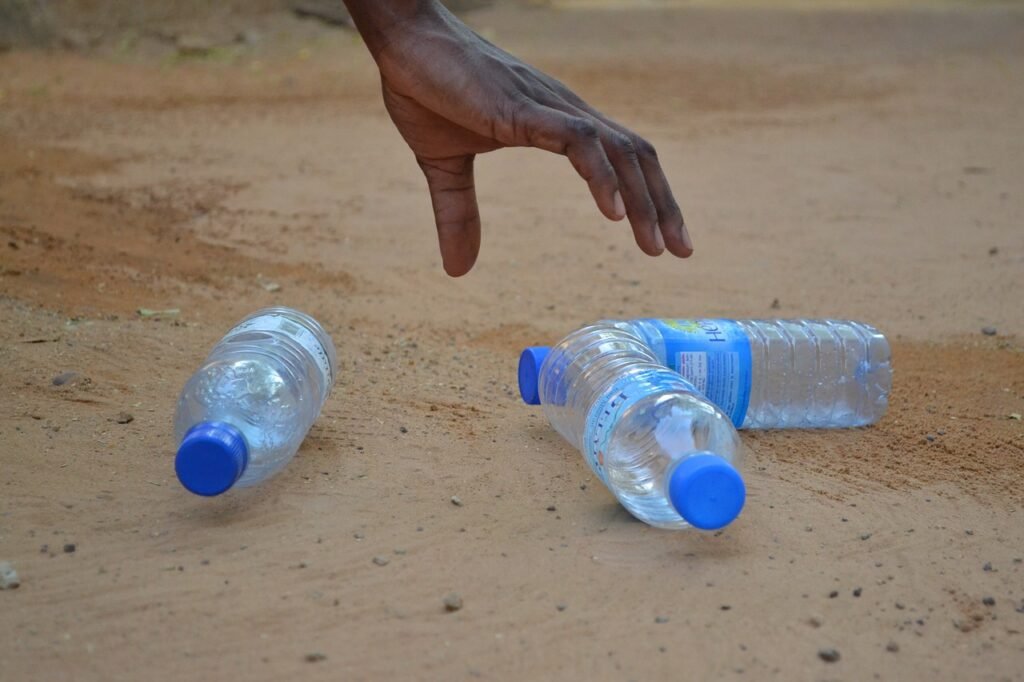The issue of single-use plastics is a pressing environmental concern that has captured the attention of people worldwide. These everyday items, used once and often discarded carelessly, are wreaking havoc on our planet. From oceans to landfills, the impact of these plastics is far-reaching and devastating. Grassroots movements are emerging as a powerful force in combating this menace, driven by passionate individuals and communities determined to make a difference. In this article, we delve into the heart of these movements, highlighting their efforts and the scientific rationale behind their campaigns.
The Ubiquity of Single-Use Plastics
Single-use plastics are everywhere. From the grocery store to the coffee shop, these items have infiltrated every aspect of our daily lives. The convenience they offer is undeniable, but this comes at a significant environmental cost. Plastic bags, straws, and cutlery are often used for mere minutes, yet they persist in the environment for hundreds of years. This persistence is due to plastics’ resistance to natural degradation processes. Unlike organic materials, plastics do not break down easily, leading to accumulation in natural ecosystems. The sheer volume of plastic waste generated annually is staggering, with millions of tons ending up in the oceans and landfills. This overwhelming presence calls for urgent action and innovative solutions.
The Environmental Impact of Plastic Pollution
The environmental impact of plastic pollution is profound and multifaceted. Marine life is particularly vulnerable, with countless animals ingesting or becoming entangled in plastic debris. Turtles mistake plastic bags for jellyfish, while seabirds often consume plastic fragments, mistaking them for food. This ingestion can lead to starvation, as the plastic fills their stomachs without providing any nutritional value. Furthermore, plastics release harmful chemicals over time, contaminating soil and water sources. These chemicals can disrupt ecosystems and pose health risks to both wildlife and humans. The ripple effects of plastic pollution are felt across the globe, affecting biodiversity and contributing to climate change. Recognizing these impacts is crucial in understanding the urgency of tackling this crisis.
Grassroots Movements: A Beacon of Hope
In the face of this daunting challenge, grassroots movements have emerged as a beacon of hope. These movements are driven by communities and individuals committed to reducing plastic waste and promoting sustainable alternatives. Unlike top-down approaches, grassroots initiatives are often more adaptable and responsive to local needs. They empower individuals to take action within their communities, fostering a sense of ownership and responsibility. This grassroots approach has proven effective in mobilizing public support and influencing policy changes. By raising awareness and encouraging behavioral shifts, these movements are paving the way for a more sustainable future. Their efforts demonstrate the power of collective action in addressing global environmental issues.
Innovative Solutions from the Ground Up

Grassroots movements are spearheading innovative solutions to reduce plastic waste. Community-led initiatives like beach cleanups and plastic-free markets are gaining traction worldwide. These events not only remove plastic waste from the environment but also educate participants about the importance of reducing plastic consumption. In addition, local businesses are being encouraged to adopt sustainable practices, such as offering reusable alternatives and implementing recycling programs. These grassroots solutions are complemented by the development of biodegradable materials and eco-friendly packaging. By embracing these innovations, communities can significantly reduce their plastic footprint and inspire others to follow suit. The creativity and ingenuity of these solutions highlight the potential for grassroots movements to drive meaningful change.
Educational Campaigns: Spreading Awareness

Education is a cornerstone of grassroots efforts to combat single-use plastics. Campaigns focused on raising awareness about the environmental impact of plastics are crucial in changing public perception. Workshops, seminars, and school programs are being organized to educate people about the importance of reducing plastic waste. These educational initiatives often emphasize the connection between individual actions and environmental health. By providing practical tips and resources, grassroots movements empower individuals to make informed choices in their daily lives. This education extends beyond simply reducing plastic use, encouraging a broader understanding of sustainability and environmental stewardship. Through these efforts, grassroots movements are fostering a culture of environmental consciousness and responsibility.
Policy Advocacy: Influencing Change

Grassroots movements are also playing a pivotal role in advocating for policy changes to address plastic pollution. By mobilizing public support, these movements are influencing local and national governments to implement stricter regulations on single-use plastics. Bans on plastic bags, straws, and other disposable items are becoming increasingly common, thanks in part to grassroots advocacy. These policy changes are essential in creating systemic shifts towards sustainability. Grassroots movements often collaborate with environmental organizations and policymakers to develop comprehensive strategies for reducing plastic waste. Through petitions, demonstrations, and lobbying efforts, they amplify the voices of concerned citizens and drive legislative action. This advocacy underscores the importance of collective efforts in shaping environmental policy and creating lasting change.
The Role of Social Media in Mobilizing Action

Social media has become a powerful tool for grassroots movements in the fight against single-use plastics. Platforms like Instagram, Facebook, and Twitter are being used to share information, organize events, and mobilize support. Hashtags and viral campaigns raise awareness and engage a global audience, transcending geographical boundaries. Social media allows for real-time communication and collaboration, enabling grassroots movements to reach a wider audience and build momentum. Through online platforms, individuals can connect with like-minded activists, share success stories, and exchange ideas. This digital activism complements on-the-ground efforts, enhancing the visibility and impact of grassroots movements. The role of social media in driving environmental change cannot be overstated, as it empowers individuals to take action and amplify their voices.
Challenges and Opportunities in the Movement

While grassroots movements have made significant strides, they face several challenges in their fight against single-use plastics. Limited resources, resistance from industries, and lack of awareness are some of the obstacles they encounter. However, these challenges also present opportunities for growth and innovation. By collaborating with businesses, governments, and other organizations, grassroots movements can leverage resources and expertise to overcome barriers. Building partnerships and fostering community engagement are key strategies for expanding their reach and impact. Furthermore, the growing public awareness of environmental issues presents an opportunity for grassroots movements to galvanize support and drive meaningful change. By addressing these challenges head-on, grassroots movements can continue to lead the charge in the fight against plastic pollution.
Success Stories: Grassroots Victories

The success stories of grassroots movements are a testament to their effectiveness in combating single-use plastics. From small towns to major cities, communities worldwide have achieved remarkable victories in reducing plastic waste. For example, a coastal village in India successfully banned plastic bags, inspiring neighboring regions to follow suit. In the UK, a grassroots campaign led to the implementation of a plastic straw ban in several cities. These victories demonstrate the power of collective action and the potential for grassroots movements to drive systemic change. By sharing these success stories, grassroots movements inspire others to take action and contribute to the global fight against plastic pollution. These achievements highlight the importance of local initiatives in addressing global environmental challenges.
A Call to Action: Join the Fight
The fight against single-use plastics requires the collective efforts of individuals, communities, and organizations worldwide. Grassroots movements offer a platform for everyone to get involved and make a difference. Whether through participating in local cleanups, advocating for policy changes, or simply reducing personal plastic consumption, everyone has a role to play. By joining forces with grassroots movements, individuals can amplify their impact and contribute to a more sustainable future. The fight against plastic pollution is not just an environmental issue; it is a call to protect our planet for future generations. By taking action today, we can create a cleaner, healthier world for all.



